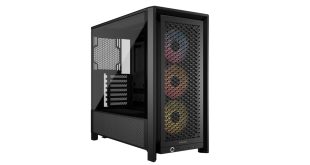We've already seen some impressive graphical showcases on Sony's PlayStation 5 console, including ray-traced reflections in titles like Spider-Man and Ratchet & Clank. Moving forward, Sony may be looking to squeeze even more out of the system, with a newly discovered patent detailing new ray-tracing acceleration tech.
Sony has patented a new ray tracing acceleration technology. Essentially, the idea is to speed up the rendering time with RT enabled, while also reducing load on the GPU. This would be achieved through an RTU (Ray Tracing Unit), which operates independently of the GPU. This unit could work asynchronously with a shader program and thus speed up ray tracing.
Unfortunately, it is not clear if this tech could be implemented on the PS5 in its current form. At the moment, PS5 hardware uses an RDNA 2 GPU from AMD, which has its own dedicated cores for ray tracing. The addition of another RTU unit would require a hardware refresh, and could possibly even be saved for a PS5 Pro, or a new generation of PlayStation console.
In the meantime, we expect to see more next-gen only games and a wider implementation of ray-tracing over the next year, especially as Unreal Engine 5 becomes more suitable for full-scale production at game studios around the world.
Discuss on our Facebook page, HERE.
KitGuru Says: The PS5 is still a brand new console and is still hard to pick up at retail, but Sony isn't slowing down and continues to work and research ways to make future PlayStation hardware better. Whether or not we see the feature described in this patent during the PS5 generation still remains to be seen – many patents never end up making it to market, so keep expectations tempered.
 KitGuru KitGuru.net – Tech News | Hardware News | Hardware Reviews | IOS | Mobile | Gaming | Graphics Cards
KitGuru KitGuru.net – Tech News | Hardware News | Hardware Reviews | IOS | Mobile | Gaming | Graphics Cards


